In every kitchen example I've seen, on every food show I've watched, and in every cooking text I've read, the importance of a fully stocked pantry is never questioned.
"Stock up!" they say. "Fill the fridge and freezer with food! You'll have meals within reach at a moment's notice without extra shopping!"
For example, I picked up my copy of Sara Moulton's book
Sara's Secrets for Weeknight Meals a couple weeks ago after I finally unpacked it, and I found a suggested pantry list that went on for
six pages. Highlights included:
- Six different vinegars - whoops, make that seven vinegars
- Tahini
- Coconut milk
- Bulgur
- Powdered egg whites
- Crystallized ginger
- Three paprikas
- And so on.
While I love Sara Moulton and appreciate many of the recipes in her book, I just can't justify stocking my shelves with so much food that has no readily apparent use in my cooking repertoire. Not to mention that I doubt I could
afford to buy half of a list like that!
The pantry as we know it is a seriously disturbed notion. As in many aspects of American culture, we're encouraged to buy,
buy,
buy without really thinking it through.
So let's think.
1.
Even with a "fully stocked pantry," you're probably still shopping several times a week to "fill in." The kitchens I'm most intimately familiar with (including my old one in Las Vegas) were filled to bursting with food, but that never stopped the owners (including me) from frequently buying more to suit last-minute recipe whims.
Or, frankly, last-minute "I-don't-know-what-to-cook, so-let's-just-grab-something-pre-made" whims. Oh, the skeletons in my closet!
Fill-in shopping happens most when you aren't planning meals in the first place, but even if you have set out a schedule, neglecting to check what you have in the house while plotting can lead to last-minute stops for what you thought you had but found depleted -- or expired.
2. On that note . . .
It's too easy to forget what you have stocked when you have a big pantry. When you have overflowing cupboards, it's no wonder that you forget that you have 10 cans of kidney beans in the back and thus go out and buy more for your recipe.
3. Pity those 10 cans of beans, because
food doesn't last forever. That bottle of Thousand Island I bought because I'd thought maybe someday I might want it on a burger? Well, a year or more of burgers slathered with mustard or barbecue sauce passed while that Thousand Island sat growing as fresh as a stepped-on daisy.
People stocking a pantry often try too hard to anticipate every need -- or notion -- and end up with food that never gets touched. Possibly for years! When I moved away from Vegas, I tossed plenty of unopened and untouched jars and boxes I'd bought so long ago I couldn't remember their origins. It was a waste of both food and money.
Think I'm overreacting on this one? Let's go to the extreme. I once volunteered alongside my aunt to help clean out her neighbor's house, which had been declared a health hazard by the police. Let's forget for a moment about the 20-odd cats in the backyard or the fridge that, I heard, was a solid sheet of mold inside. I was stuck with basement duty -- that is, with pantry duty.
See, the cleanup crew's intention was not to actually render the basement habitable. The lady who had lived there was a compulsive hoarder, so the task was too great. The plan was to seal the basement off completely, leaving the remnants for future archaeologists to puzzle over I suppose. However, before that could be done, we had to dig a path to the basement pantry and eliminate all the old food down there that was sure to raise a stink long before Indiana Jones would arrive.
Have you ever seen a can of soup so old that the contents had leached through the bottom and spilled out over the shelves? All I can say is, be happy you've never
smelled dozens of them.
4.
The relentless push to stock the pantry in our culture leads us to lose sight of reality. We buy more even when we don't need more because, though hopefully to a lesser extent than that lady, we are convinced that we never have enough.
Do you need two bottles of ketchup in reserve? Think about it. Are there food shortages where you live? Do you have no access to a supermarket? Will you experience intense suffering if you are without ketchup for a day?
If you answered "no," then the wiser, less cluttered, and more frugal approach is to hold off on buying a new bottle until the current one is nearly or actually empty. You won't end up wondering someday how risky it is to use ketchup that expired six months ago (or more).
5.
When you cave to the pantry-building urge, you lose space, making your kitchen a cluttered, unpleasant place to be. How many times did I open my refrigerator or freezer, food in hand, and sigh at the prospect of yet another round of storage Tetris?
Clutter causes stress, and naturally you want to avoid places that stress you out. You then develop a negative relationship with the kitchen. That led to me avoiding cooking whenever possible, even though I love to cook!
What's the Solution?
It might sound like I am completely anti-pantry and that I'm advocating barren shelves. That's not the case; rather, I find our current concept of the pantry outmoded, a leftover from the days when food was more scarce and stores more troublesome to visit, and when winter limited us to the food we had "put up" in the summer.
In other words, the 19th century, with a dash of the Great Depression.
Pantry practices have been passed down from parent to child for decades now without adjustment for the realities of living in a mobile, bountiful society. Sure, the economy might be in the toilet right now, but I haven't noticed any lightening of the crowds at Costco and the grocery store. People might be eating at Applebee's less, but they aren't just getting by on stone soup.
Your pantry has to adjust to your lifestyle and cooking habits. It shouldn't hold more food than your family could conceivably consume in about a month. Why stock more when you can go to the store every week?
Eliminate the fear of
being out from your psyche. The world doesn't end if balsamic vinegar runs dry! Just sub in some olive oil for the melted butter in that recipe! Who eats the 10 frozen pizzas kicking around "just in case" before their next supermarket visit?
In case of
what, by the way? A fire taking out your kitchen? A natural disaster knocking out your utilities? Guess what, my dears: Extra pickle relish and Hot Pockets won't do you much good in those situations. And I doubt you'll be offering company dropping by unexpectedly your supply of Spaghetti-Os.
I'm not saying it will never come in handy that you had something or other stowed away. But is "Good thing I had this squirreled away in the back!" once a month worth the daily hassles of searching fruitlessly for ingredients you're sure you have
somewhere? Sure, you "might need it someday," but you really need the space and the sanity today!
As part of our continuing series on creating an effective meal planning system, we'll talk about stocking a pantry in a way that can save money without drowning yourself in extra food. Next week, we'll examine the pitfalls and successes I've encountered in testing my new approach to pantry maintenance in my new kitchen!
Technorati Tags:
food,
meal planning,
pantry

 The key to weight loss is burning more calories than you consume. You can achieve this through consuming fewer calories and through burning more calories by exercising.
The key to weight loss is burning more calories than you consume. You can achieve this through consuming fewer calories and through burning more calories by exercising.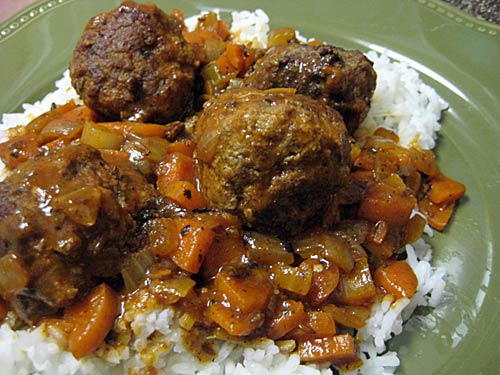
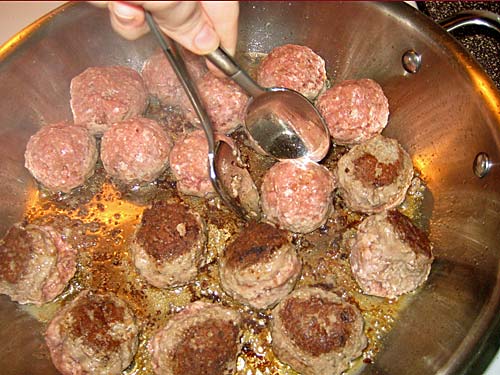
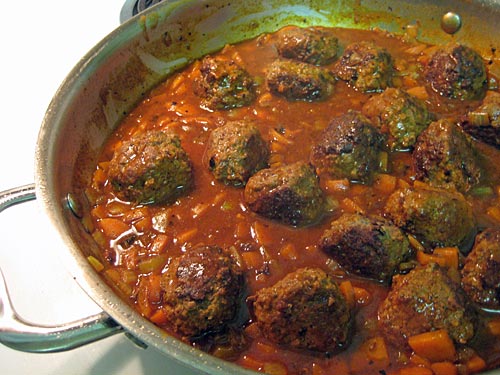
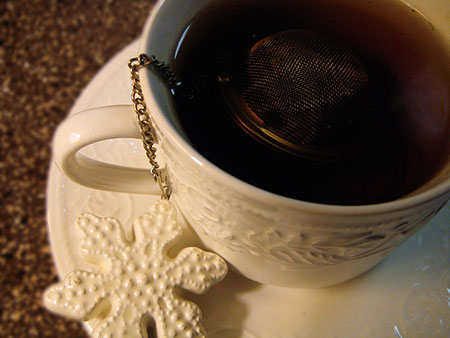 A couple weeks ago, I was watching the Food Network as I fussed with some web site maintenance when Ellie Krieger started rattling off a list that caught my attention. I snatched my pocket notebook off the coffee table and started scrawling quickly, a throwback to my journalism days.
A couple weeks ago, I was watching the Food Network as I fussed with some web site maintenance when Ellie Krieger started rattling off a list that caught my attention. I snatched my pocket notebook off the coffee table and started scrawling quickly, a throwback to my journalism days.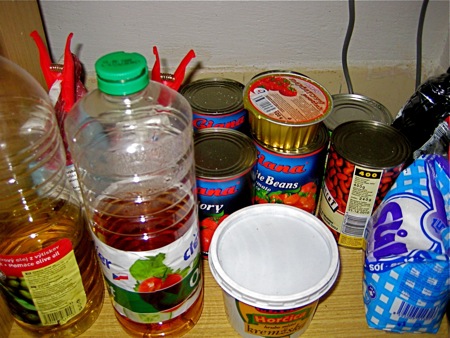
 Last week, I explained the concept of
Last week, I explained the concept of 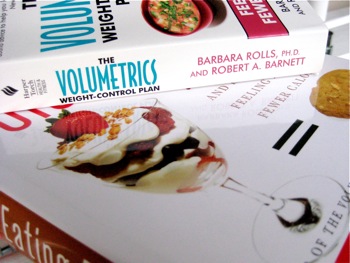 Welcome to the world of energy density. It's the concept at the heart of the Volumetrics weight-control plan, but many diet plans employ the same basic idea. It's a concept that can help you learn to make healthy food choices that won't leave your tummy unsatisfied.
Welcome to the world of energy density. It's the concept at the heart of the Volumetrics weight-control plan, but many diet plans employ the same basic idea. It's a concept that can help you learn to make healthy food choices that won't leave your tummy unsatisfied. Fruits and vegetables can be fun for kids, and changing the menu at school and in the community can make significant difference in children’s health.
Fruits and vegetables can be fun for kids, and changing the menu at school and in the community can make significant difference in children’s health. I unleashed
I unleashed 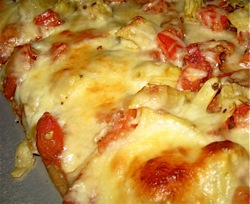 It's Monday again, which for me is shopping day. It's also a work day, which brings both benefits and drawbacks. For me, the reduced crowds at Fred Meyer and Costco outweigh having to shoehorn in another task on the first writing day of my week.
It's Monday again, which for me is shopping day. It's also a work day, which brings both benefits and drawbacks. For me, the reduced crowds at Fred Meyer and Costco outweigh having to shoehorn in another task on the first writing day of my week.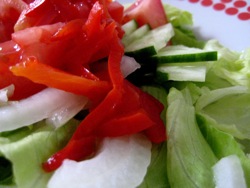 It's good to get back on track with posting again. It's like normality has returned to my life. If only "normal" didn't get interrupted so frequently, I'd be totally back on schedule!
It's good to get back on track with posting again. It's like normality has returned to my life. If only "normal" didn't get interrupted so frequently, I'd be totally back on schedule! Guess what!?
Guess what!? If you’ve been surfing the net lately, surely you’ve noted that Food Network’s web site is sporting a fresh look. Gone are the days of lime green and tiny type; say hello to splashy crimson.
If you’ve been surfing the net lately, surely you’ve noted that Food Network’s web site is sporting a fresh look. Gone are the days of lime green and tiny type; say hello to splashy crimson.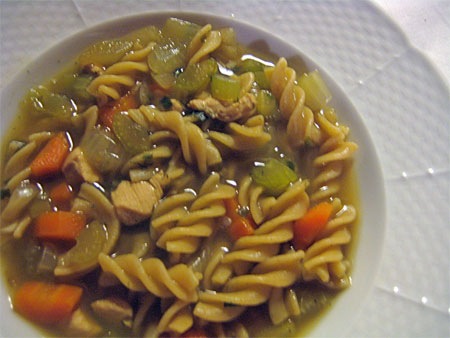 Whether it’s the now drizzly, chilly weather or a common malaise, chicken soup can cure what ails you.
Whether it’s the now drizzly, chilly weather or a common malaise, chicken soup can cure what ails you. Politics was the word Saturday night as Paula Deen welcomed Michelle Obama to her grease-themed episode of Paula’s Party.
Politics was the word Saturday night as Paula Deen welcomed Michelle Obama to her grease-themed episode of Paula’s Party.
